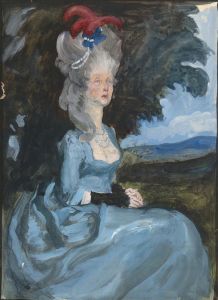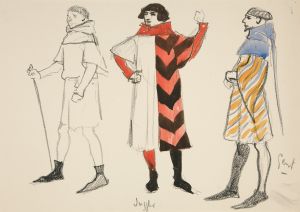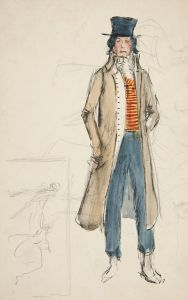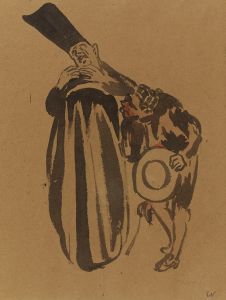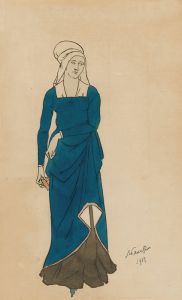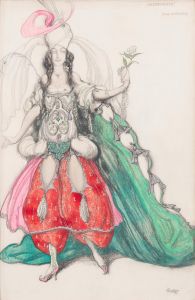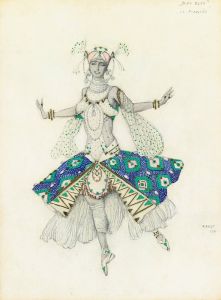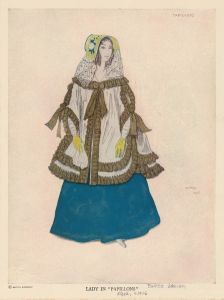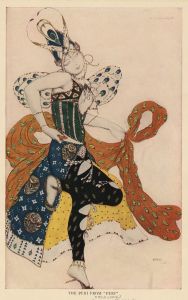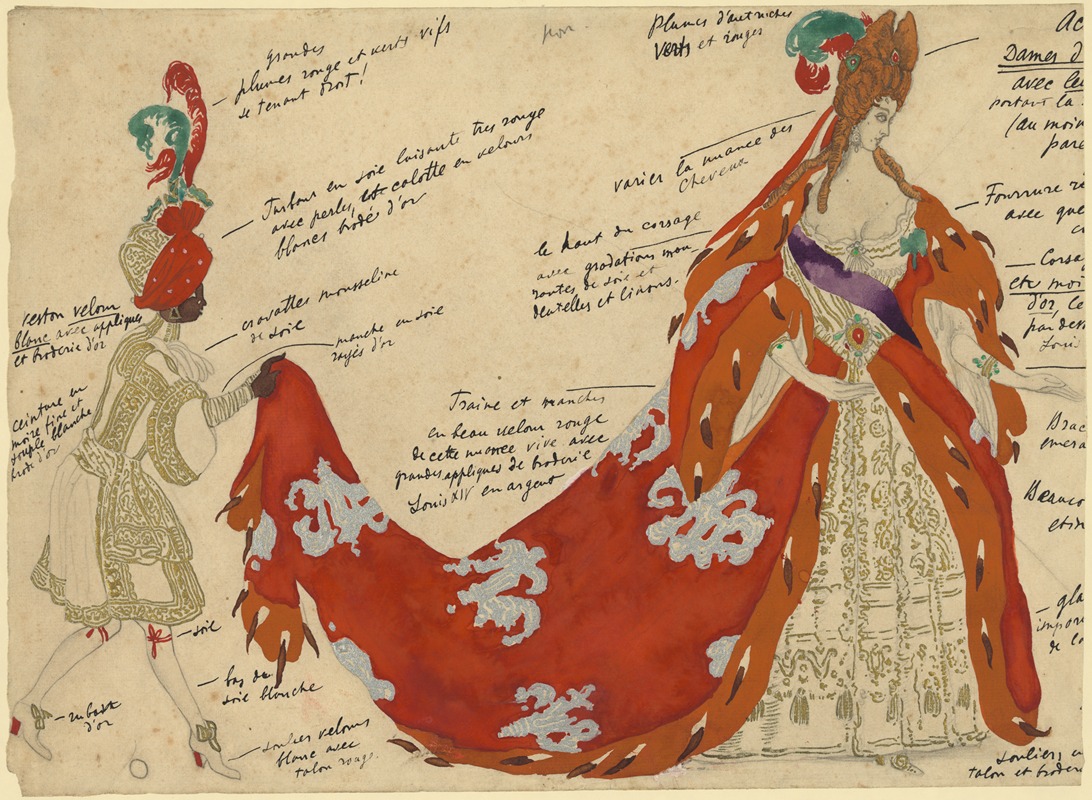
A Courtier in The Sleeping Princess
A hand-painted replica of Léon Bakst’s masterpiece A Courtier in The Sleeping Princess, meticulously crafted by professional artists to capture the true essence of the original. Each piece is created with museum-quality canvas and rare mineral pigments, carefully painted by experienced artists with delicate brushstrokes and rich, layered colors to perfectly recreate the texture of the original artwork. Unlike machine-printed reproductions, this hand-painted version brings the painting to life, infused with the artist’s emotions and skill in every stroke. Whether for personal collection or home decoration, it instantly elevates the artistic atmosphere of any space.
"A Courtier in The Sleeping Princess" is a painting by Léon Bakst, a renowned Russian painter and scene and costume designer. Bakst was born as Lev Samoilovich Rosenberg on May 10, 1866, in Grodno, which was then part of the Russian Empire. He is best known for his work with the Ballets Russes, a famous ballet company founded by Sergei Diaghilev. Bakst's designs for the Ballets Russes were highly influential and are celebrated for their vibrant colors, exotic themes, and innovative use of materials.
The painting "A Courtier in The Sleeping Princess" was created in 1921. It is one of Bakst's many works that reflect his deep involvement in the world of theater and ballet. The painting depicts a courtier, a member of the royal court, in a scene from the ballet "The Sleeping Princess," which is an adaptation of the classic fairy tale "Sleeping Beauty." This ballet was choreographed by Marius Petipa with music by Pyotr Ilyich Tchaikovsky and was first performed in 1890 at the Mariinsky Theatre in St. Petersburg, Russia.
Bakst's painting captures the opulence and grandeur of the royal court, with the courtier dressed in elaborate and richly detailed costume. The use of bright colors and intricate patterns is characteristic of Bakst's style, which often drew inspiration from Orientalism and Art Nouveau. The courtier's attire likely reflects the historical and fantastical elements that Bakst was known to incorporate into his designs, blending traditional European styles with exotic influences.
The painting is a testament to Bakst's skill as both a painter and a designer. His ability to convey the drama and elegance of the ballet through his artwork helped to elevate the visual experience of the performances he was involved in. Bakst's contributions to the Ballets Russes were instrumental in shaping the aesthetic of early 20th-century theater and ballet, and his work continues to be celebrated for its artistic innovation and beauty.
Léon Bakst's legacy extends beyond his paintings and designs; he was also a teacher and mentor to many young artists. His influence can be seen in the work of subsequent generations of designers and artists who were inspired by his bold use of color and imaginative approach to costume and set design.
"A Courtier in The Sleeping Princess" remains an important piece in the history of theatrical art, exemplifying Bakst's unique vision and his ability to bring the magic of the stage to life through his artwork. The painting is a valuable part of Bakst's oeuvre and continues to be appreciated by art enthusiasts and historians alike for its contribution to the visual culture of the early 20th century.






